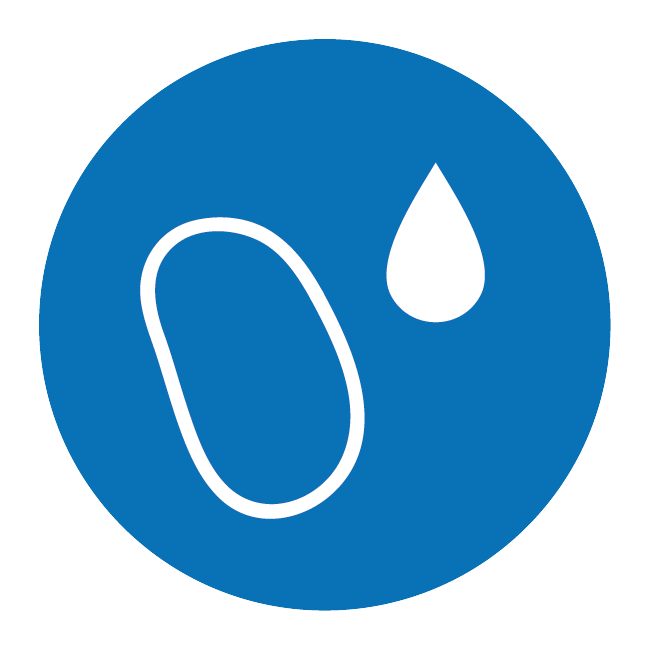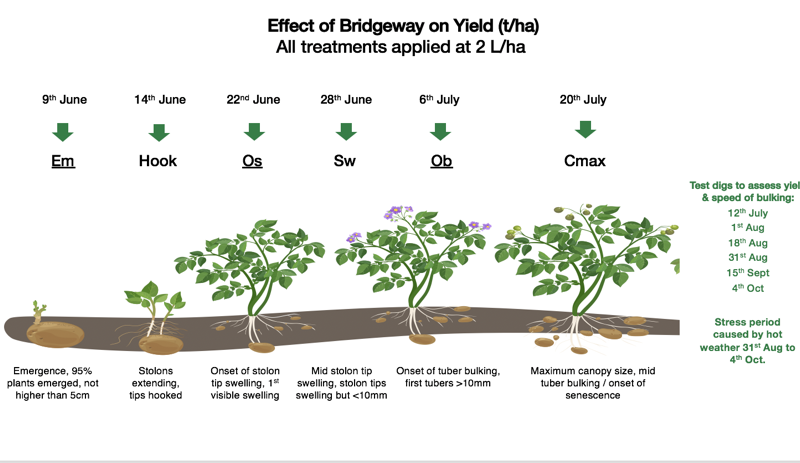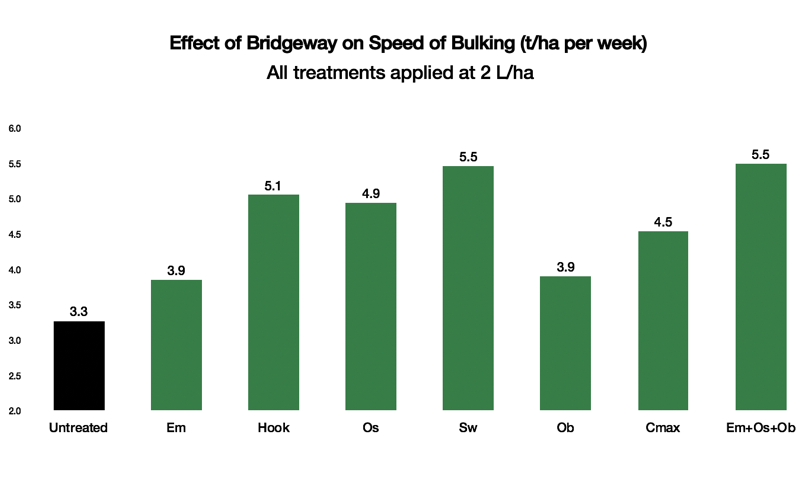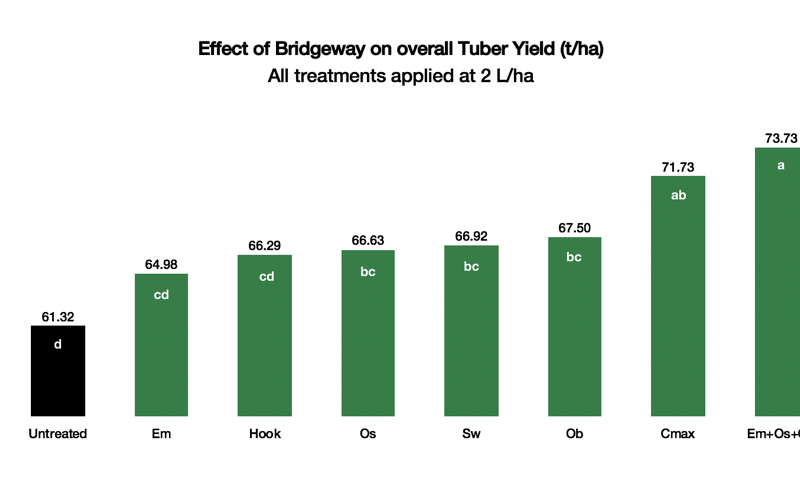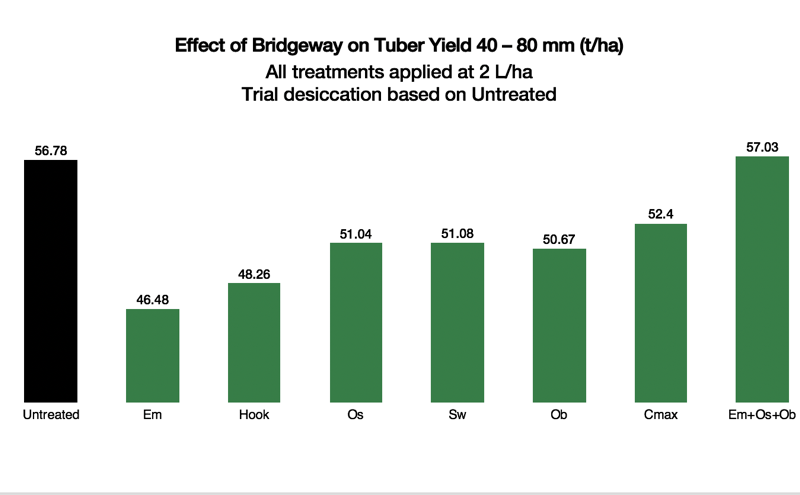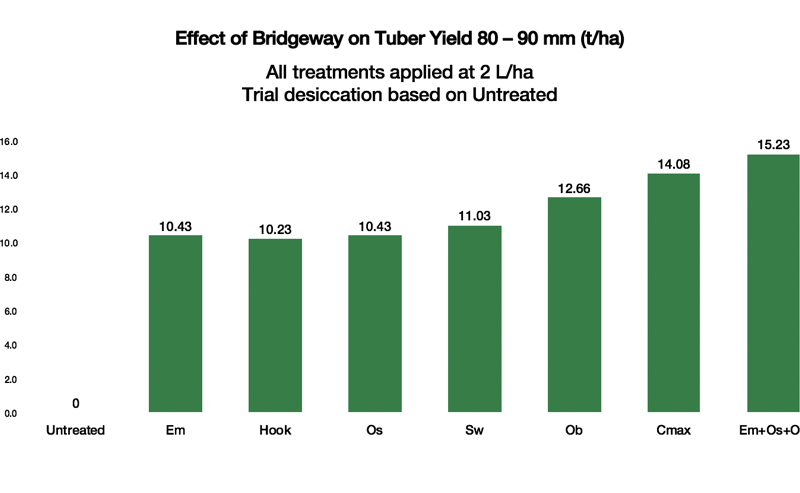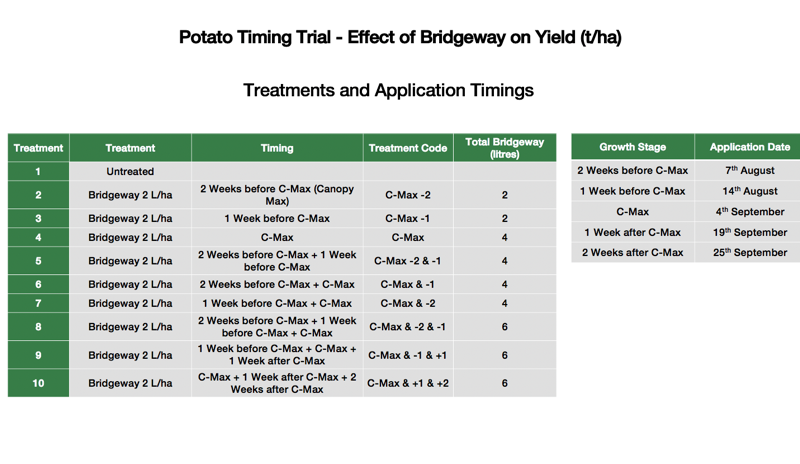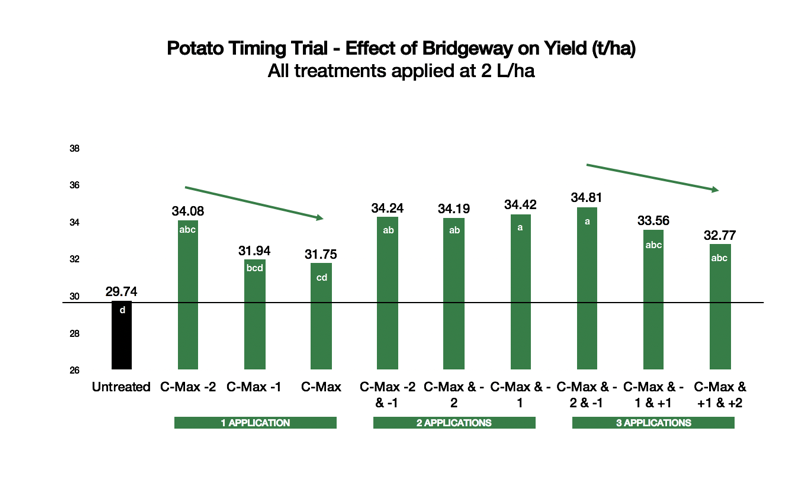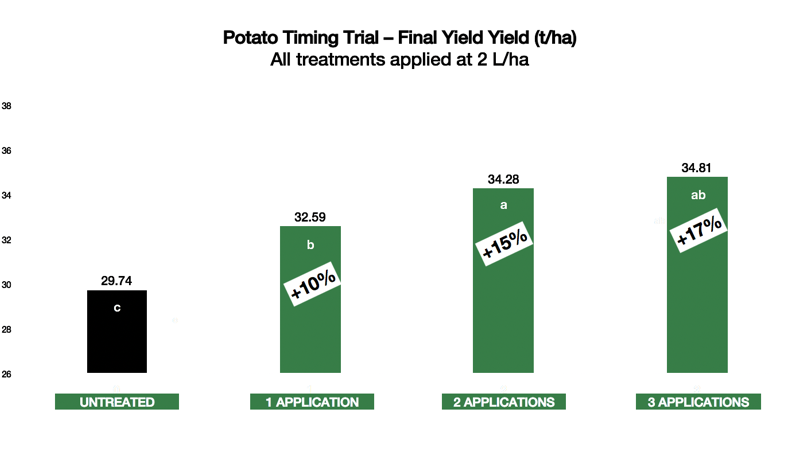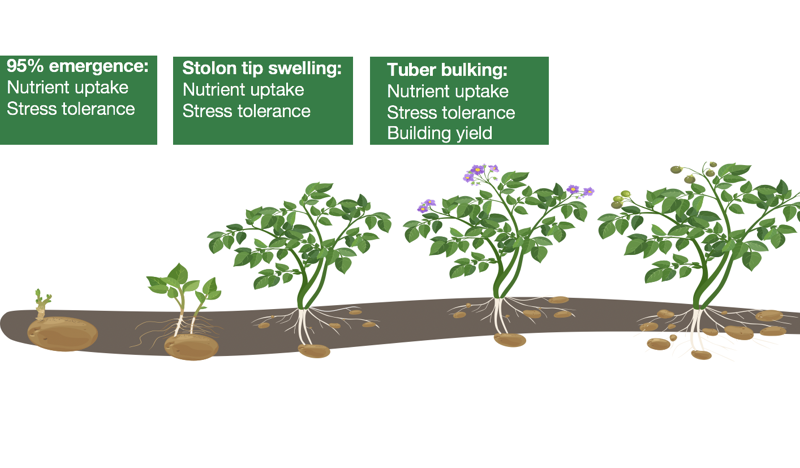Following a year of unprecedented weather extremes and challenges to plant health, we take a look at how biostimulants have been performing in potato trials and how they can be used to help optimise yield potential as we head into the 2019 potato campaign.
The production of a fit and health potato crop is no easy task. A thirsty crop requiring plenty of water early in the season just for canopy development, growing potatoes requires managing a whole host of diseases, weeds, pests and disorders with a limited toolbox. In replicated trials over the past two years, biostimulants Bridgeway/Zonda have shown consistent benefits in potato crops, increasing bulking by up to 2.2 t/ha per week and yield by up to 12.4 t/ha.
Getting the most from your biostimulant application is more an art than an exact science. Although Bridgeway/Zonda can be used on all crops throughout growth without restriction, the perfect application timing may well differ from farm to farm, crop to crop or field to field. Every crop could be at a slightly different stage of development and it can be hard to predict when a crop is likely to experience stress. Applying timely applications ensures plants are suitably prepared to deal with these conditions as they arise.
With the experience we have gained to date, we have found that the best yield responses come from programmes that start with applications at emergence.
2017 replicated trials showed increases in speed of bulking of +2.2 t/ha per week and overall tuber yield of up to +12.4 t/ha
2017 trial summary:
- 2017 trials explored applications at a range of timings and in a programme
- All Bridgeway treatments increased speed of bulking – by an average of +2.2 t/ha per week
- All Bridgeway treatments increased yield, significantly from Os (onset of stolon tip swelling) onwards
- Biggest impact on speed of bulking and highest yields came from using Bridgeway in a programme – applications at Em + Os + Ob (i.e. 95% emergence + onset of stolon tip swelling + onset of tuber bulking)
- The best yield increase from a single application came from Bridgeway applied at Cmax (i.e. maximum canopy size, mid tuber bulking)
Overall conclusions:
- Bridgeway allows crops to cope better with stress
- Bridgeway builds tuber yield faster
- Bridgeway could permit earlier desiccation – may allow easier lifting; potentially one less blight spray; quicker entry into the next crop
- Bridgeway increases marketable yield.
2018 replicated trials showed early applications, in a programme delivered significant yield increases
2018 trial summary:
- 2018 Bridgeway trials looked at 3 application timings and programmes: at Cmax (maximum canopy size), Cmax -2 weeks and Cmax – 1 week
- All Bridgeway applications increased yield
- Early applications delivered significant increases and gave the highest yields
- A programme delivered the highest yield response
Conclusions following 2 years of trials:
Early and ongoing applications of Bridgeway can increase speed of bulking and overall tuber yield by improving plant health. Best results are likely to be achieved by applying Bridgeway in a programmed approach to help maintain plant fitness and resilience to stress as the season develops.
Recommended application timings for best results
Bridgeway and Zonda application summary:
- For best results, apply Bridgeway or Zonda early to protect yield potential
- Apply ahead of crop stress and maintain applications at the key stages of crop development
- Apply 2.0 L/ha from 95% emergence
- Follow up at stolon tip swelling and top up again at the onset of tuber bulking
- Mixing order when applying with crop protection products: 1. Bridgeway or Zonda 2. Crop protection products.



